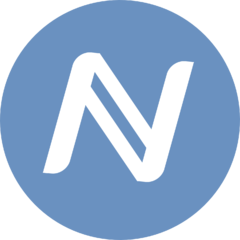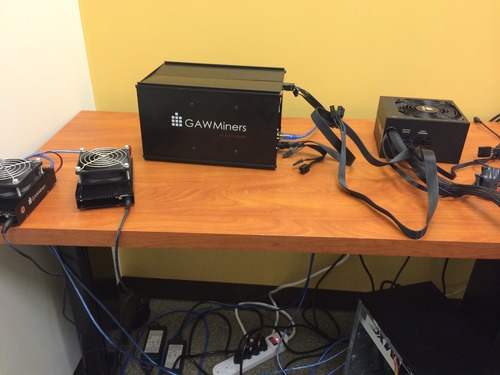As many people are beginning to realize the power of crowdfunding platforms such as Kickstarter andIndiegogo, developers from around the world are already creating new technologies that will be able to completely replace and improve upon these centralized services. Crowdfunding through an online service is pretty cool right now, but you can’t use those platforms to give your investors what they really want. At the end of the day, people want to be able to get a return on their initial investment through stock valuations or dividends. With the technology behind Bitcoin, anyone will soon be able to create crypto stocks or equities that can be backed by anything from shares in a particular company to a physical asset, such as gold. This gets rid of many of the roadblocks and filters found in the financial markets. You can already write up a prospectus and post it online for the entire world to see, but decentralized exchanges can take this idea to the next level.
The History of Bitcoin Stock Markets
Before we get into the details of what could happen in the future, we must take a look at what has already happened in the world of Bitcoin stocks. Although we do not yet have the holy grail of decentralized exchanges, we do have a few centralized versions of Bitcoin stock exchanges, which are quite interesting to explore. These Bitcoin stock exchanges allow us to get a glimpse of what will be possible with decentralized crypto assets. To attract investors on a Bitcoin stock exchange, all a person has to do is write up a business plan and explain how they are going to make money for their shareholders. There were many scams and “pump and dump” situations in the early days of these crypto equities, but these centralized stock exchanges were also the birthplace of investment opportunities in many respectable companies, such as ASICMiner and Satoshi Dice.
Global Bitcoin Stock Exchange
The Global Bitcoin Stock Exchange, or GLBSE, was the first major player in the crypto equity space. Access to the exchange was originally restricted to command line prompts, but it eventually grew into a full web interface. Although many, some would say most, of the assets issued through this service were complete scams, it also introduced a brand new concept to the financial world. Entrepreneurs who wanted to start companies were able to go to GLBSE, create shares of their company within minutes, and then issue profits to investors in the form of dividends. This system worked for over a year without any hiccups, but it was eventually brought down by the creator of the exchange over legal concerns. Since one of the founders of GLBSE lived in the UK, he asked for legal advice regarding his online, anonymous stock exchange. Obviously, the advice he received was to shutdown the exchange immediately to avoid accusations of money laundering, operating a stock exchange without a license, and other criminal offenses.
MPEx and Satoshi Dice
During the time that GLBSE was enjoying its rise to fame, another exchange was also operating under the radar. MPEx is a unique exchange because it offers cryptographic security for investors and asset issuers through PGP. This means that anyone who interacts with the site could potentially remain somewhat anonymous. Many people would point to the initial offering for Satoshi Dice as MPEx’s main claim to fame. Satoshi Dice was one of the first businesses to ever operate strictly in the Bitcoin world, and it is still used today by thousands of Bitcoiners around the globe. It’s basically a provably fair dice game where users can bet bitcoins on a random number generated by the Satoshi Dice website. Satoshi Dice generated roughly $500,000 worth of profits in 2012, but the shares were eventually bought back from investors. After the buyback process was finalized, the company was eventually sold to an anonymous individual for $11.5 million worth of bitcoins.
BTC-TC and Bitfunder
BTC-TC and Bitfunder were the two most widely used Bitcoin stock exchanges in 2013, and they were both viewed as replacements for GLBSE. These exchange platforms were active during the period of time when governments started to take a closer look at Bitcoin as a whole, which is why both of them were eventually shutdown by their owners. The fact that the two most popular crypto stock exchanges were shutdown voluntarily goes to show that there is definitely a need for decentralized exchanges in the world of cryptocurrencies.
Havelock and Cryptostocks
Even with all of the issues found in centralized crypto stock exchanges from the past, there are still two major players in this space. Havelock Investments is owned by The Panama Fund, which is a licensed private investment company based in Panama. This licensed and above-board operation is probably the best possible version of a centralized Bitcoin stock exchange. Cryptostocks works in the kind of legal gray area that we’ve seen in the past from the likes of BTC-TC and Bitfunder. Although these two choices give investors incredible options when compared with more traditional financial markets, the reality is that we can still do better.
The Problems with Centralized Bitcoin Stock Exchanges
There are a few different issues that pop up with centralized Bitcoin stock exchanges. While they do a wonderful job of allowing people to issue shares instantaneously for any kind of asset, they also come with that central point of failure. New features of the Bitcoin protocol, which are currently being built, will be able to avoid the need for a centralized exchange authority. Many of the issues found in a centralized exchange are similar to the issues of a centralized currency. The technology behind Bitcoin needs to be applied to the exchange market for the following reasons:
- Regulation – We’ve seen most versions of centralized Bitcoin stock markets succumb to the regulations around issuing securities in various parts of the world. While Havelock Investments is currently operating in what seems to be a completely legal manner, they certainly aren’t collecting information about their users for KYC and AML purposes. There is nothing that could stop the US Government from going down to Panama and shutting down the operation, just like they went down to Costa Rica to shutdown Liberty Reserve. Without that central point of failure, the exchange cannot be shutdown. This is also one of the main selling points of Bitcoin.
- Censorship – Centralized exchanges have the final say when it comes to whether or not a user’s asset will be allowed on the market. Censorship is impossible in a decentralized exchange because it is nothing but software. There is no entity acting as a filter between the assets that are created and the assets that make their way onto the exchange.
- Fees – The last thing to consider is that centralized exchanges come with fees. Centralized exchanges will oftentimes have a fee attached to each trade. There could also be fees for withdrawing and depositing funds to and from the exchange. With a decentralized exchange, there are little, or perhaps zero, fees.
The decentralized exchange has been viewed as the first big step towards Bitcoin 2.0. The basic idea is that anyone will be able to issue their own stocks, currencies, ETFs, and other assets from the comfort of their own home. All of those assets can then be traded against one another for little to no cost. This means that someone could potentially create a new currency instantly that is backed by an ounce of gold sitting in a safe at their house. On the other hand, entrepreneurs will realize that it is easier to find investors when they can sell shares in the company rather than promise to provide their early backers with t-shirts and bumper stickers. Let’s take a closer look at the real implications of the coming decentralized exchanges.
Colored Coins and Smart Property
Colored Coins is a project that is aiming to build a decentralized exchange where user created assets and smart property can be traded by anyone in the world. The project is nothing more than a new layer on top of Bitcoin, and it comes with its own wallet. The way it works is that users can color their bitcoins to represent certain assets. Going back to the gold example, the person holding that gold could take one of their bitcoins and say that the bitcoin now represents an ounce of gold. They can break that ounce of gold into 100,000,000 pieces, just like a bitcoin. The same concept applies when talking about a new company that wants to offer shares to the public. They could take 10,000 satoshis and say that each one of those satoshis represents a share in their company. Owners of those shares could then trade them for anything from bitcoins to the gold-backed currency mentioned above on the decentralized exchange found in the wallet. A user of theChromawallet can basically back any of their satoshis with whatever they want. You could even say that one of your satoshis represents the title to your house or car.
Initial Public Offerings
Before the creation of crypto stocks, the process of going public was quite expensive. For example,Twitter recently spent nearly $60 million just on underwriters and IPO fees. The sad part is they actually got a pretty good deal for a traditional IPO. Issuing an IPO also means going through an S-1 filing. The SEC has to take a look at everything laid out in the prospectus, and they’ll ask for changes to anything they don’t like. There is usually a back and forth between the SEC and the company’s legal team for a few months before the government finally allows the company to go through with the IPO. In the early days of crypto stock exchanges, entrepreneurs and heads of companies sometimes had to get permission from the centralized exchange for their particular asset to be listed for trade. With the upcoming decentralized options, an IPO can be launched as soon as the prospectus is ready. The entire process is also completely free. There will be many new, exciting assets created simply because it will be so easy to create them. We could see the fine line between an IPO and a crowdfunding effort become blurred thanks to crypto assets.
Crowdfunding with a Purpose
Before centralized crypto stock exchanges, there were many centralized crowdfunding platforms. On a website such as Kickstarter, an entrepreneur can basically have their customers pay for a product before it is released. This way, the company can have money to work with during the period of time where they are creating a prototype or getting ready for their first shipments. For example, many app developers kickstart their apps by having many people around the Internet donate a few dollars. They can then use those funds for living expenses while the app is being developed. This is definitely a move in the right direction, but it doesn’t come close to the crowdfunding experience we will see on the decentralized crypto exchanges. Instead of only offering the product or certain perks to the people who participate in the crowdfunding effort, an entrepreneur can now offer actual shares in the company. For example, Adam Carolla crowdfunded his upcoming movie on a website called FundAnything. The fact that he was able to raise nearly $1.5 million on this website is simply amazing because he wasn’t really offering much more than t-shirts, access to the Road Hard website, spots in the movie, and other perks to the people who funded the movie. Now, how much do you think Carolla, or anyone else for that matter, would be able to raise if they were able to easily sell shares of the future profits that the movie could make from the theatrical release, Netflix licensing, and everything else? A crypto asset could also be used as a token that can be redeemed for a copy of the movie after release. It will be interesting to see the kinds of unique funding methods that entrepreneurs can create in this environment. Whether you’re an author looking to kickstart a book or a company worth millions of dollars looking to go public, decentralized crypto stock exchanges are going to be your best option.
Shareholder Voting
Most of the early Bitcoin stock exchanges allowed for some form of shareholder voting on their online portals, and we can expect to see the same option in all of the decentralized exchanges. The only difference is that the voting could take on a proof of stake system. With this setup, someone who owns a crypto asset would basically have to digitally login to the voting portal by signing a message with the private key from the Bitcoin address that holds their shares in the company.
Asset Backed Crypto Currencies
While the main point of Colored Coins and other similar projects is to allow people to issue assets and then exchange them in a decentralized manner, there is another aspect of this revolutionary concept that needs to be addressed. At the end of the day, these new assets could basically turn into their own cryptocurrencies. For example, some merchants may want to accept a gold-backed ETF from one of the decentralized exchanges as payment for goods and services. We could even see people paying for groceries with bits of Apple stock. As of right now, you could make the argument that Apple stock would be a better form of currency than bitcoins. After all, the market cap of Apple has been hovering around the $500 billion mark, which is about 50 times the value of all the bitcoins in the world. This system could also work for a form of bartering. Let’s say you decide to help a musician or band kickstart their album. They give you a crypto asset that can eventually be redeemed for the released album after you send them some bitcoins. What’s stopping you from using that album token as money to pay back a friend for lunch? These are the kinds of possibilities that are leading many people to rethink their own definitions of money.
In part two of this series on crypto assets, we discussed all of the implications for decentralized exchanges and blurring the line between IPOs and crowdfunding. Those concepts are definitely exciting, but not as exciting as distributed autonomous corporations (DACs). It’s amazing that anyone in the world will soon be able to issue their own IPO without any filter or fee, but what if the company that was going public was also a completely autonomous entity? Instead of creating a new online sportsbook and then taking it public on Colored Coins, what if you coded a completely autonomous corporation that took wagers from two parties and released the funds to the winner once the sporting event had completed? What if you coded a distributed application that could replace Facebook and Twitter, without the need for ad revenue and privacy concerns? What if you could monetize free and open source web applications? This is the future of the Internet. This is thedistributed autonomous corporation.
The Basics of Distributed Autonomous Corporations

Namecoin logo
The best way to explain DACs is to look at Namecoin. For the most part, altcoins are viewed rather negatively; however, there are a few that are actually worth your time. Namecoin is one of those coins because it is a distributed autonomous corporation. The corporation sells domain names on a decentralized domain name system(DNS). If you want to buy a .bit domain name, you have to purchase it with namecoins; that’s what gives namecoins their underlying value. Namecoins are mined in the same manner as bitcoins. The only real difference is that namecoins can be used to purchase domain names, while bitcoins are simply a currency. Namecoin miners are verifying transactions and letting everyone know who owns what domain name. This is why it is not crazy to say that namecoins actually have more intrinsic value than bitcoins. Bitcoin was actually the first DAC, and Namecoin has already proven that it won’t be the last. There are currently dozens of DACs in the works, and all of them are going after centralized services to provide a better, decentralized product.
How Do Investors Make Money?
Different DACs have different models when it comes to creating profits for their investors. In the cases of Bitcoin and Namecoin, the profits come from the fact that the nominal values of bitcoins and namecoins go up as more people use those particular DACs. As long as the customers of a particular DAC want to use that DAC’s services, the currency behind it will have value. Other models can also be created where holders of the currency behind a DAC can be paid dividends on a regular basis. The best part is that we are probably going to see many different DACs going after the same market. The DAC that creates the best automated model for both investors and customers in a particular market will be able to come out on top. This is capitalism in its purest form.
The Competitive DAC Market
There are many different projects being built around the concept of distributed autonomous corporations. Invictus Innovations, Mastercoin, NXT, Ethereum, and many others are all vying for their places in the space, and you’d be insane to think that you could pick a winner right now. Each organization has their own method of going after the basic structure of DACs, and the only projects that will be able to survive are the ones that offer the user exactly what he or she needs at an affordable price. At the end of the day, it doesn’t really matter which project ends up producing the platform that everyone uses to interact with DACs in the future because we’re all winners in the end. The only losers from the creation of this technology will be the current centralized corporations and organizations who dominate the Internet. When you look at Ethererum, Mastercoin, Invictus, and the rest of the pack, you could be looking at the Googles, Microsofts, and Apples of the future. Then again, the current tech giants could always adapt.
Who Will Be Affected by Distributed Autonomous Corporations?
If there is a centralized service on the Internet right now, you can bet that it will eventually be replaced by a DAC. Everything from YouTube to Facebook is fair game, and it will be difficult for these centralized institutions to keep up with distributed applications that have little to no overhead. The idea of distributed autonomous corporations already exists, so now we just have to wait for the programmers and entrepreneurs to create the applications that build on the original thought. We’re usually talking about dot-com companies disrupting various industries around the world, but soon we are going to be talking about the new DACs that are disrupting the dot-coms.
Monetizing Open Source Software
The last point that needs to be made when it comes to DACs is that they will add the kind of profit motive for free and open source software that simply did not exist in the past. Some of the decentralized applications that we see built in the coming years are going to be projects that have basically stalled out because there was little to no profit incentive for the developers and supporters of the projects. You can only go so far with donations. One of the reasons email is a disaster when it comes to privacy is because there is no profit motive driving entrepreneurs to create a better solution. Gmail doesn’t cost any money, but it also mines all of your private messages to target you with advertisements. This means that your emails are being read by Google at some point, even if it’s only by a robot. Someone could have made a free alternative to Gmail that relied on donations to stay afloat, but it would have been an inferior product that was difficult to market to the general public. When you can create an encrypted email DAC that focuses on privacy and providing a quality product that can rival Gmail, it becomes much easier for the general public to care about computer security. This is just one example of the many free, open source software DACs that we are going to see in the near future. The GNU/Linux fanboys have been talking about the era of open source for decades, and the combinations of recent NSA revelations and distributed autonomous corporations could be the catalyst to finally bring the free software movement to the masses.
The Best is Yet to Come
The most exciting aspect of learning about distributed autonomous corporations is that some of the best ideas probably haven’t even been created in the form of thoughts yet. We are about to witness the kind of improvement in the efficiency of the free market that we have not seen since the invention of the Internet. This is why people say that Bitcoin is the most important invention since the creation of the Internet, and you’ll have more reasons to believe that idea as time goes by.
Source: http://newswax.com/2014/01/implications-crypto-assets-part-3-distributed-autonomous-corporations/
Article by: Kyle Torpey



